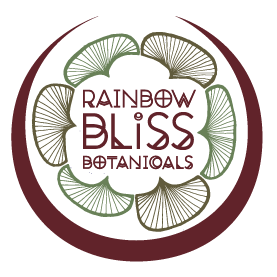Unbeknownst to me until 2012, there has been a Vitex Tree growing in my own backyard for over twenty-five years! I began to study urban farming at ASU’s School of Sustainability and found a tree in one of my textbooks that look strikingly like the tree in my backyard…so I looked into this Mediterranean climate-loving tree and discovered it was a Chaste tree. During this time, my mom was in the beginning stages of menopause, and I was (and still am) struggling with hormone-induced acne and also detoxing from chemical birth control.
Since beginning studies in Western Herbalism, I have been distracted by the abundance of desert plants to study, and left Vitex on the backburner. However, in September of 2014, my employee and I began a class series offered through my herbal apothecary called Wise Woman Womb Botanicals, which focuses on educating about natural contraceptives, lunar cycle tracking, herbs for menopause, and aphrodisiacs. After classes about Neem, lunaception, and Queen Anne’s Lace, we had our first class dedicated to Vitex. In this class we used Vitex from my backyard harvested on the Libra New Moon and made tinctures with Sedona Spring Water and Organic Cane Alcohol. We compiled information to hand out to the class from Susan Weed’s Books: Down There; Sexual and Reproductive Health, and New Menopausal Years: The Wise Woman Ways as well as Rosemary Gladstar’s, Herbal Healing for Women’s Health.
Here is the information I shared via the text of these Wise Women:
- Most valuable function is its ability to normalize function of the female sex hormones: Balancing hormones, bodily functions and endocrine glands.
- Excellent herb for restoring and regulating estrogen and progesterone balance.
- Ability to assist the stimulation of the pituitary gland, which is responsible for regulating and normalizing hormonal production.
- Although it does not contain progesterone, it has the effect of regulating and restoring progesterone production in the body.
- If used correctly, the herb will encourage the body to set in motion a hormonal balance, whether it is a deficiency of estrogen or progesterone. This normalizing action is particularly beneficial in giving relief from irregular menstruation, infertility, endometriosis, menopausal discomfort and other hormonal imbalances.
- Increases the production of luteinizing hormones (LH), enhancing the progesterone cycle. Inhibits FSH (follicle stimulating hormone). Normalizes estrogen. Does not actually contain direct hormones, but rather hormonal precursors.
- Has proved to be a deliverer for many women from a life of pain and misery from PMS. Relieves uterus pain, spasms and inflammation, due to it’s content of agnoside.
- Chaste may help with PMS symptoms such as swelling, sensitive breasts, fluid retention, bloating, lower back and abdominal pain, headaches, irritability, depression, aggression, difficulty concentrating, hot flushes, weight gain and loss of libido.
- Calming agent in hysteria and has been historically used to treat “insanity”.
- Has also been used in the treatment of dysmenorrhea, relief of hormonal acne (esp teenagers), painful and irregular menses, delayed menstruation, infertility, PMS, fibrocycstic breasts, breast pain, endometriosis, PCOS, vaginal dryness, uterine fibroids, menopausal symptoms and other hormonal imbalances.
- For chronic conditions such as menstrual irregularities, endomentriosis, infertility, and delayed menstruation, take for up to 1 year or longer.
- Emmenagogue, diuretic, liver health.
- Helpful in normalizing the system after discontinuing birth control.
- Known to inhibit implantation if taken in the first week of pregnancy, as it may interfere with ovulation. For best results, use berries.
- Can trigger ovulation, even in older women. Some women are reported to release several eggs during a cycle with chaste, increasing the chances of multiple births. Has an effect of normalizing abnormal hormonal secretions for the corpus luteum, and re-establishing the luteal phase in women whose cycles are short.
- Stimulates the production of prolactin, and is used by nursing mothers to stimulate milk flow.
- Can bring relief to menopausal symptoms related to progesterone deficiency, and the later years of a woman’s life. Menopausal women have used it in the relief of hot flashes. Can take 2-3 months to see positive results.
- It’s reputation as an anaphrodisiac may be a myth. Research in the last 20 years has shown it more as a body normalizer than anything. However, it should be noted in men that it can have the effect of halting sperm production, reducing testosterone production and causing atrophy.
Dosage:
Tincture: 1-2ml, 3x/day
Tea: 1tsp berries infused in 1 cup boiling water for 10-15 min, taken 3x/day
Emmenagogue: 200-350mg berries, taken 2-3x/day for up to 6 days.
Food: Use as a peppercorn substitute
Caution: Use caution if you are weak or anaemic. Minor gastrointestinal upset and itchiness has been reported in about 2% of users. Beware of dopamine receptor antagonist medications, or if you have Parkinson’s disease. Avoid if you are taking contraceptive medications, or if you are susceptible to estrogen related cancers of the breasts or uterus.
